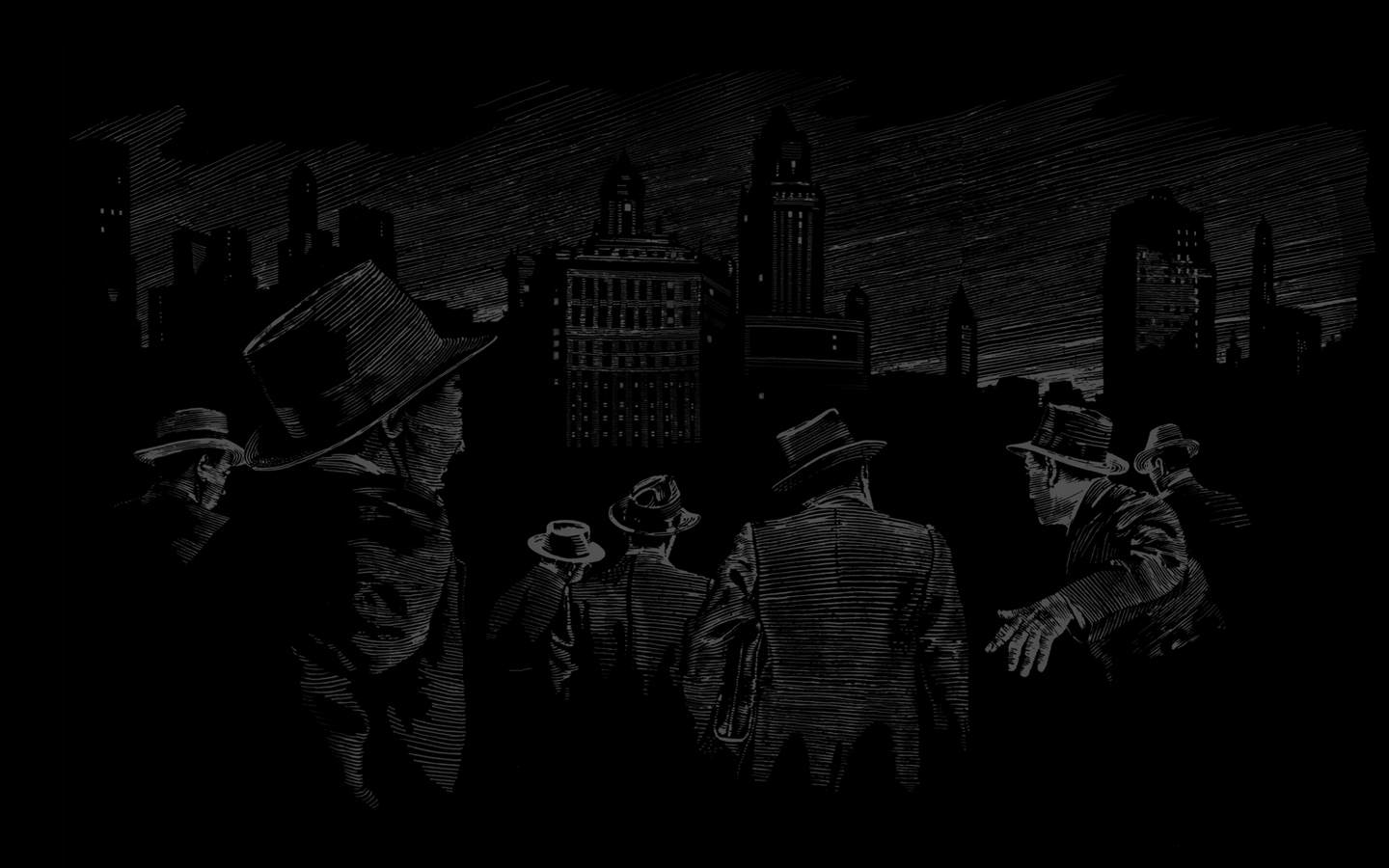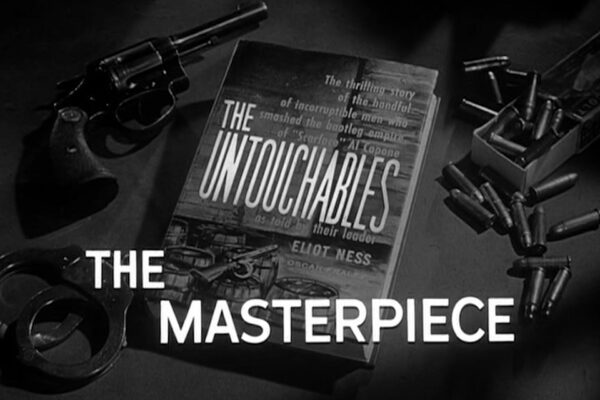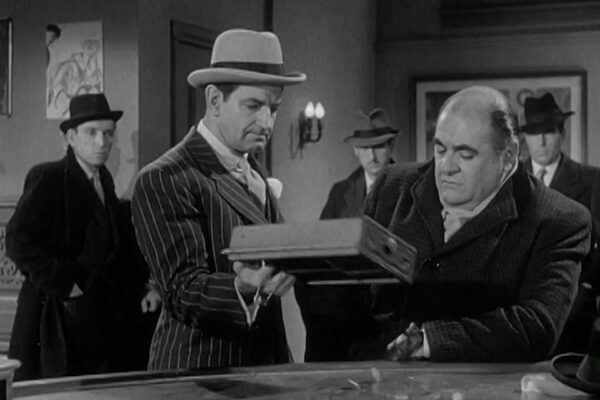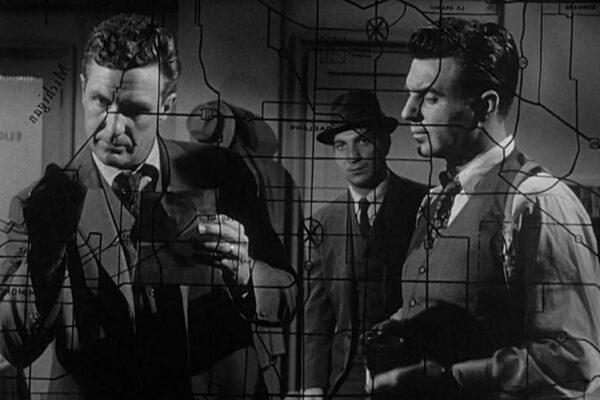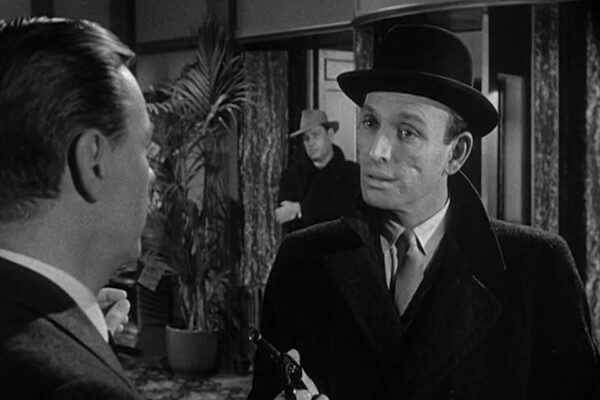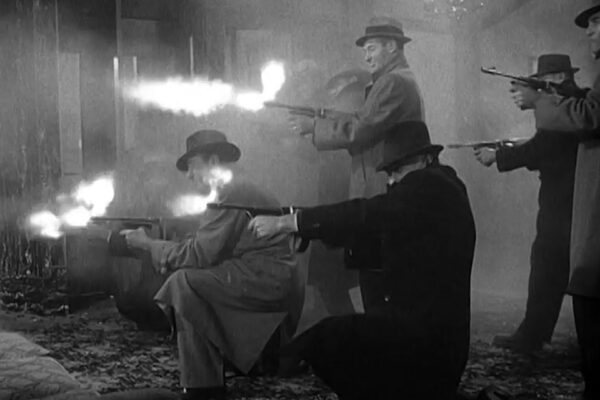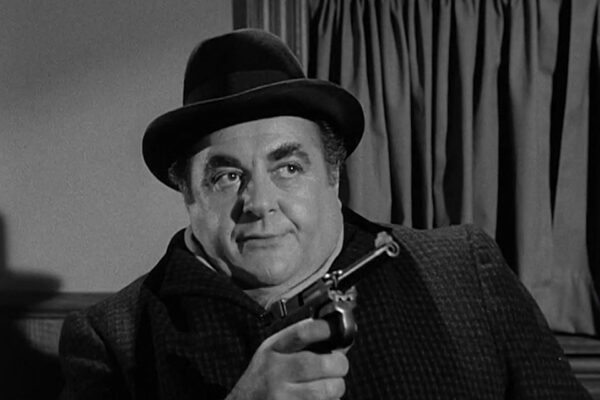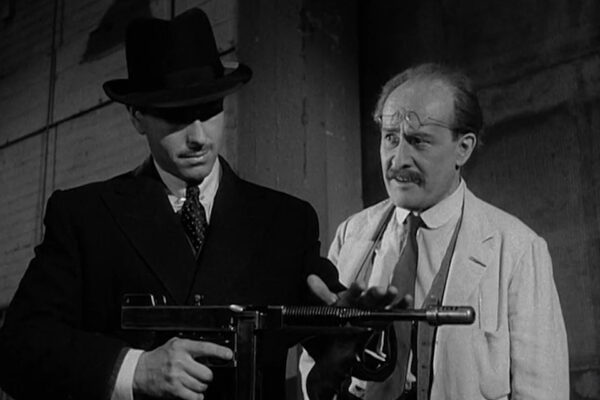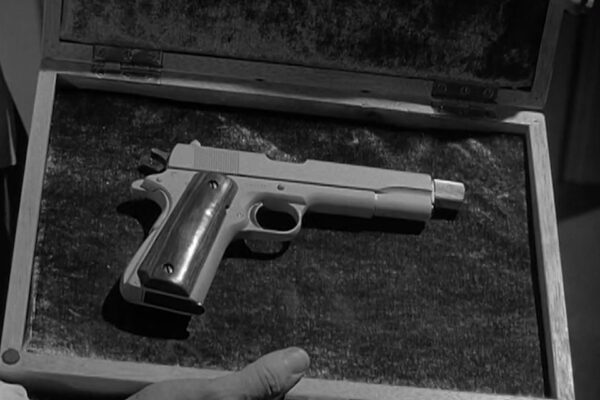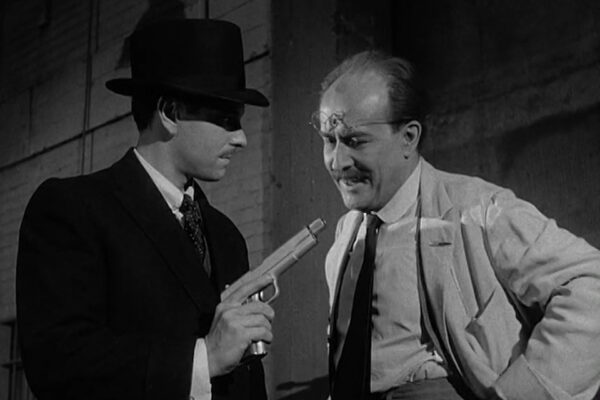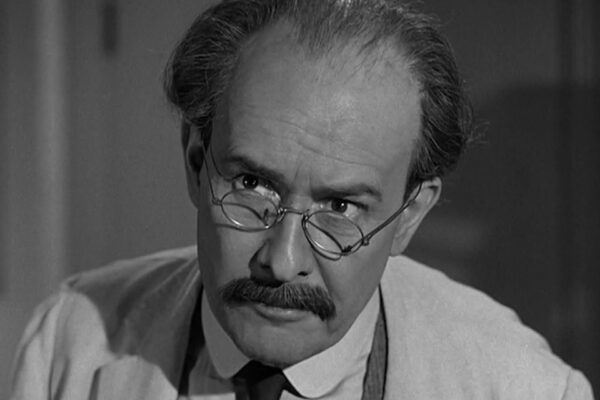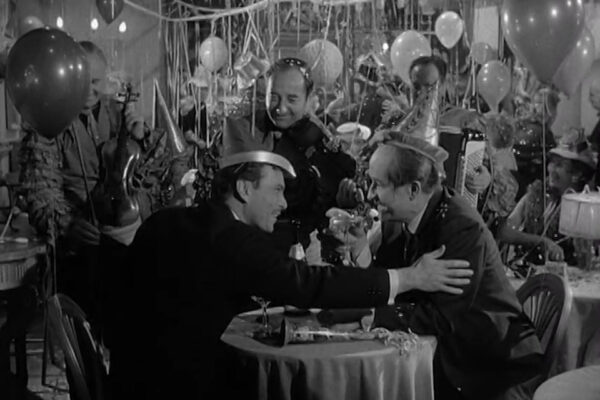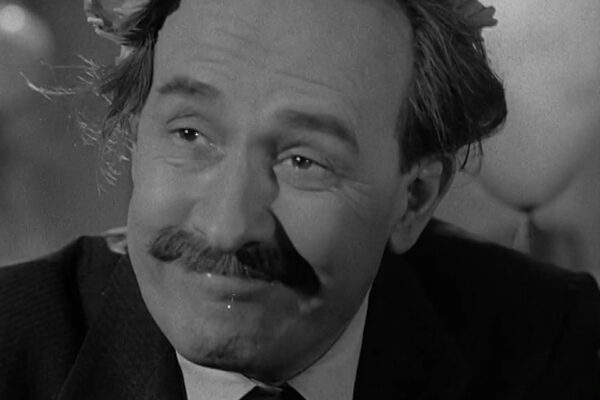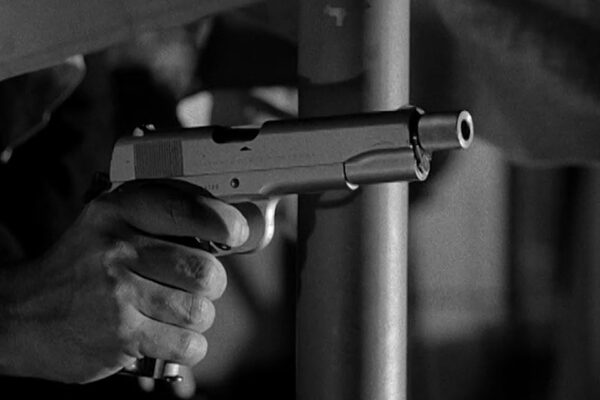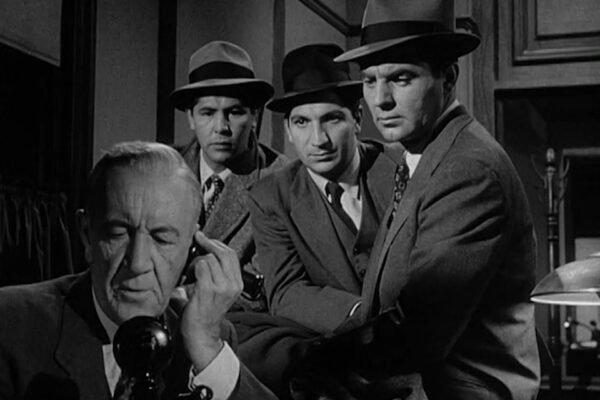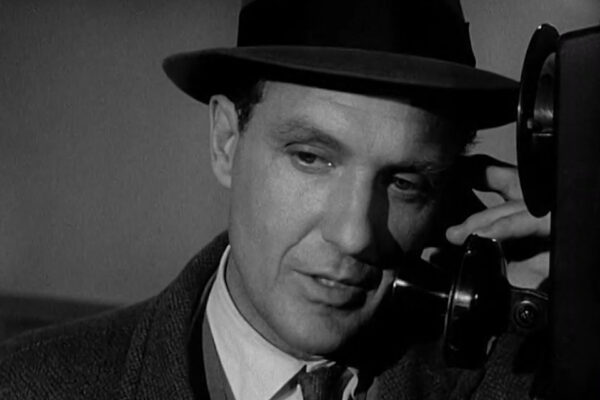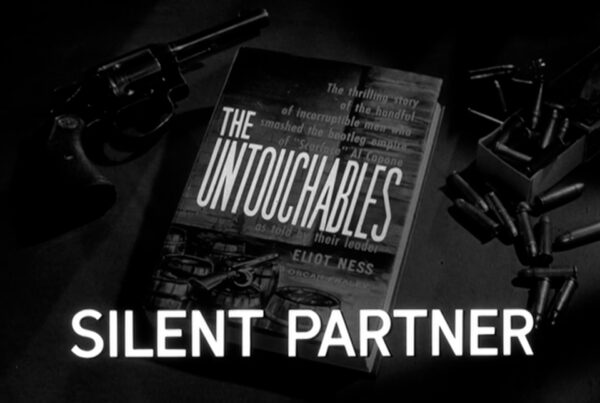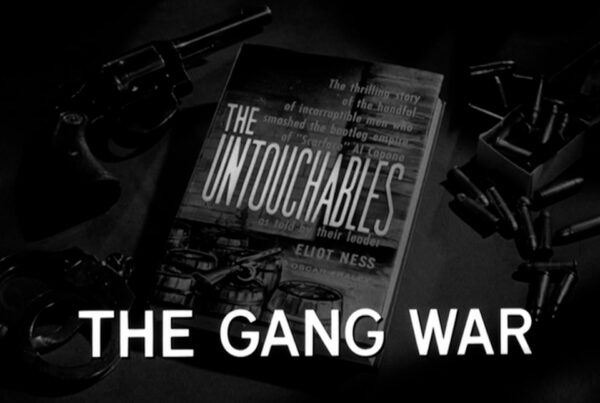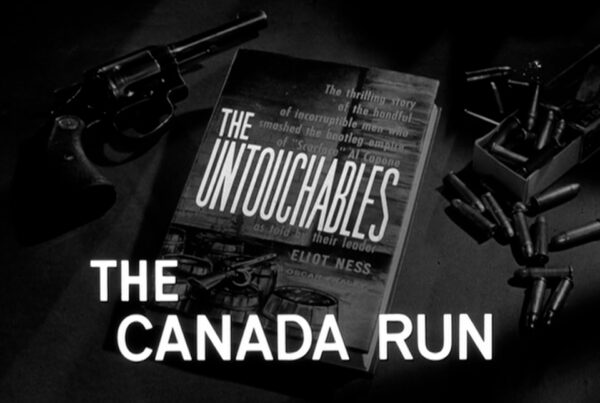THE MASTERPIECE
Airdates: January 19th, 1961 and August 31, 1961
Written by David Z. Goodman
Directed by Walter E. Grauman
Produced by Lloyd Richards
Director of Photography Charles Straumer
Special Guest Star Rip Torn
Co-starring Bruce Gordon, George Voskovec, Robert Middleton
Featuring Harry Shannon, Joseph Ruskin, Addison Richards, Alexander Lockwood
“With the conviction and jailing of Al Capone, the richest plum of the Capone empire, the operation of the speakeasies and the breweries in the heart of Chicago, was split into two parts. The speakeasies were acquired by Meyer Wartel. Wartel was a Capone lieutenant. Distinguishing characteristics: killer, and hypochondriac. The breweries and distilleries were acquired by Carl Positan. Positan, too, was a Capone lieutenant. Distinguishing characteristic: killer. In a bold effort to take over the entire operation, Positan had withheld the whisky and beer, which Wartel needed to run his speakeasies. As a result, the number of speakeasies flourishing in Illinois’ largest city, dropped to an all-time Prohibition low. The tremendous loss in speakeasy revenue brought Frank Nitti, Capone’s collector, face to face with Meyer Wartel.”
Nitti forces Wartel (Robert Middleton) into action against Positan and a brief, one-sided gang war erupts. Faced with overwhelming odds, Positan flees, leaving Wartel in control of both production and distribution. Taking out after the victor, the Chicago Leader wages an editorial campaign against Wartel. Attempting to persuade the editor, Michael Shaw (Harry Shannon), to stop the attacks, Wartel loses his patience and guns him down. An aluminum alloy fragment on one of the shells leads Eliot Ness to conclude that the weapon may have been handmade.
Attempting to trace the gun, Ness visits three licensed gunsmiths in Chicago, posing as a prospective buyer. His search quickly narrows to Herman Kihn (George Voskovec), the syndicate gunsmith who maintains Wartel’s arsenal. Ness’s contact with the gunsmith worries Wartel, who imports New Orleans assassin, “Pittsburgh Phil” Strauss (Rip Torn), to have Kihn removed.
Visiting Kihn at his shop, and soon basking in the adulation Kihn affords him as a renowned underworld assassin, Strauss accepts a special, silencer equipped automatic firearm that the gunsmith made. Deferring to some minor adjustments, Kihn offers to present his gift a day or two later. But soon, Strauss attempts to carry out his contract at a local movie theater. As he prepares to plunge a knife through the seat in front of him, where Kihn sits merrily enjoying himself, the film breaks and the house lights go on. Glancing around, Strauss spots Ness a few rows behind him. As he leaves, Strauss approaches Ness and discloses his identity.
Soon afterward, Ness lays out the facts for Kihn, revealing not only his identity as a federal agent, but his assumption that Strauss is in Chicago to kill, and would have done so the night before hadn’t the film torn. Kihn refuses to cooperate but takes the threat seriously.
Reporting back to Wartel, Strauss agrees to fulfill the contract, his “masterpiece,” right under Ness’ nose, as he and Kihn celebrate New Year’s Eve. Strauss plans to use Kihn’s gift as the weapon. As the gun makes no noise at all, Ness will assume, Strauss reasons, that the gunsmith passed out from overindulgence in champagne.
Descending the stairs to a speakeasy, Strauss and Kihn are soon hamming it up in an alcoholic stupor, followed closely behind by Ness and Hobson. After a time, Strauss produces the gun and points it under the table. With the noise and confusion of the holiday all around them, Strauss pulls back on the trigger only to unleash a roar of deafening proportions. In the sudden silence, the gunsmith grimaces smiles at his killer, and falls on his face. Strauss is led away, stunned. En route to the hospital, Kihn admits to having removed the gun used to kill the newspaper editor from Wartel’s arsenal and destroyed it.
Amused that Wartel will go mad when the gun turns up missing, Kihn breathes his last. Hoping to use the knowledge to his advantage, Ness releases a story conveying the notion that the police have new leads on the murder weapon, which sends Wartel to his gun cabinet. Horrified, Wartel breaks into Kihn’s shop but fails to find the gun. Observing Wartel’s misery at a distance, Ness plots to lure him into a trap with another story that ultimately leads Wartel to Northwestern University. Lying in wait, Ness turns on the lights as Wartel enters the crime lab. In a brief pistol exchange, Wartel goes down. Ness then phones the newspaper with his exclusive.
REVIEW
A convoluted, intricate, and fascinating hour, The Masterpiece is unique in that it relates two, virtually unrelated stories, quite nicely. The first, an all-out war of intimidation between two of Capone’s formerly cooperative suppliers, is fought briefly and violently, though without bloodshed, and showcases A. D. Flowers’ special effect prowess. The entire lobby of a hotel is laid ruin by machine-gun fire in a “salute” to adversary Carl Positan by an octet in the employ of Meyer Wartel. The unseen Positan flees town., leaving Wartel fat and happy – until a newspaper, believably called the Chicago Leader, takes out after him. The second story, discounting some reality, is the true masterpiece in nearly every sense of the word. Clever, tightly written, and deftly executed, The Masterpiece is a splendid example of the series in full stride.
The characters are morbidly fascinating. Rip Tom plays the thin mustachioed killer with gleeful malevolence. Assassins are seldom cuddly, but Pittsburgh Phil dares to charm where others cannot and should not. He gets away with nothing; his masterpiece fails profoundly in a measure of self-sacrificial justice, brought about by his victim, George Voskovec’s proudly artistic, solitary, albeit misguided, Herman Kihn. Leading the fray is Robert Middleton’s loud, obnoxious Meyer Wartel, an overbearing hypochondriac, who sends his men on endless errands for newspapers and nose drops, and blunders from one complaint to the next. All fall down.
The scene in which Strauss murders Kihn, only to discover that the gunsmith has rendered the silenced weapon useless, is absolutely aces.
As Strauss commits to completing his masterpiece, director Walter Grauman and screenwriter David Goodman bring in live musicians to heighten the tension – just as Grauman did in his first episode, Noise of Death – but here, the music is bright and jovial, in stark contrast to the proceedings.
The signature sound design of gunfire commonly heard on The Untouchables (lifted from the Glen Glenn Sound Company’s library) is the ideal, thunderous statement to what was supposed to be a silenced shot. The sequence, with its high camera angle of the club freezing in reaction to Strauss’ death blow, the exchanged reactions between Strauss and Kihn, and Strauss’ realization that he’s been had, are all masterfully done. Curiously, Frank Nitti has but a single scene early in the hour in which he encourages Wartel to become a better businessman – or else.
Screenwriter Goodman would weave several compelling Untouchables yarns in his contribution to the series, including The Antidote and The Matt Bass Scheme.
While Goodman’s name did not grace many television screens in the 1960s, he would later go on to co-write 1971’s Straw Dogs in a collaboration with Sam Peckinpah, a divisive and talented director whose own work explored masculinity, codes of honor, violence, and the American West. Straw Dogs would later be heralded as one of Peckinpah’s best films. Goodman would later earn an Oscar nomination for Love and Other Strangers in 1970.
OBSERVATIONS
• This is likely Bruce Gordon’s shortest cameo in the entire series. It says a lot about the established rules of the Desilu universe and its characters that Frank Nitti only needs one short scene to put pressure on the primary antagonist.
• Ironically, the footage of Capone being sentenced to prison is newly recycled footage from his admittance at Acalatraz, from the previous episode, The Big Train.
• Along with One-Armed Bandits, this is one of the few episodes with no closing Winchell narration.
• Joseph Ruskin appears as Happy Levinsky, who escapes this episode unscathed, but Ruskin will return in a number of other episodes as Louis ‘Lepke’ Buchalter and as Alexander Raeder in the standout episode, Tunnel of Horrors. Keen eared viewers will also recognize his voice from the Twilight Zone’s iconic episode, To Serve Man.
HISTORICAL NOTES
• Firearm silencers, later called suppressors, found advancement in the early 1900s first through civilian use and later for the military. While Kihn mentions they were outlawed in 1929, they were actually regulated in the 1934 National Firearms Act and became prohibitively expensive and required registration.


